Ten Chesapeake Bay native plants to plant in your yard this spring
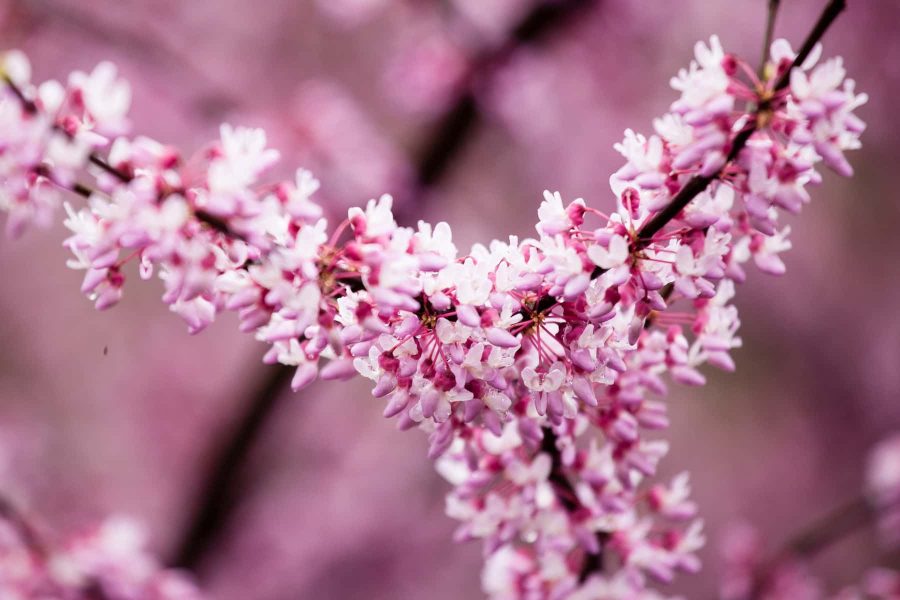
If you’ve been looking for a way to help the Chesapeake Bay, planting native plants in your yard is a great way to make a difference. Native plants are adapted to our region's environment, so they need less watering and no fertilizer–which saves you money. Less work, less cost and helpful to the Bay? Sounds great to us!
Here are ten native plants we recommend you plant in your yard this year.
1. Eastern Purple Coneflower
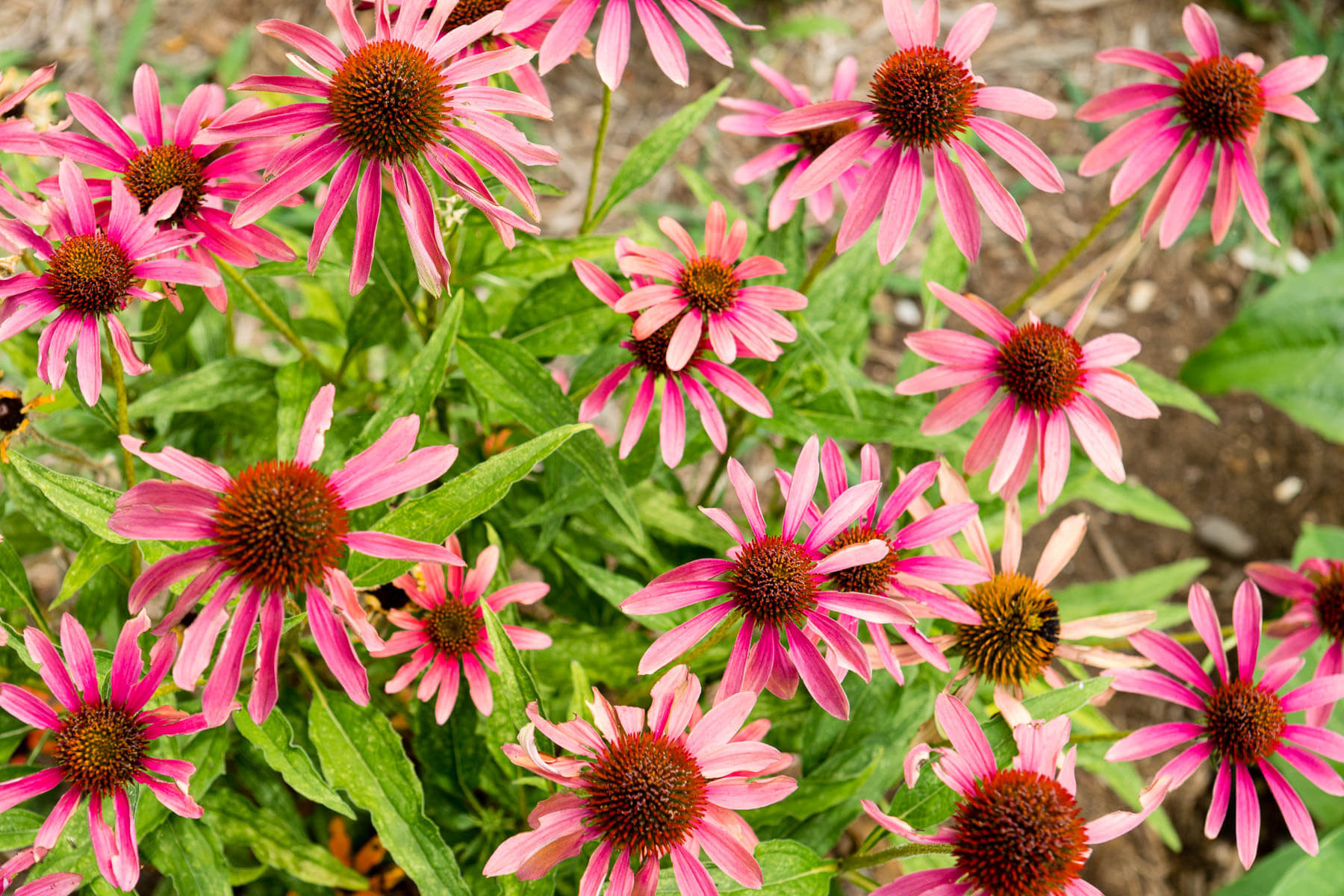
The eastern purple coneflower (Echinacea purpurea) is a popular, long-lasting perennial that grows two- to five-feet tall. Its bright lavender flowers attract butterflies, hummingbirds and other beneficial wildlife. Coneflower is also known for its herbal remedies as an immune system booster.
2. Sweetbay Magnolia

Sweetbay magnolia (Magnolia virginiana) is a slender tree or shrub with pale gray bark. It is native to all the Chesapeake Bay states, except West Virginia. It usually grows to be 12 to 20 feet tall, but occasionally reaches 50 feet in the southern part of its range. When in bloom, the plant’s fragrant magnolia flowers open in the morning and close in the evening.
3. Scarlet Beebalm
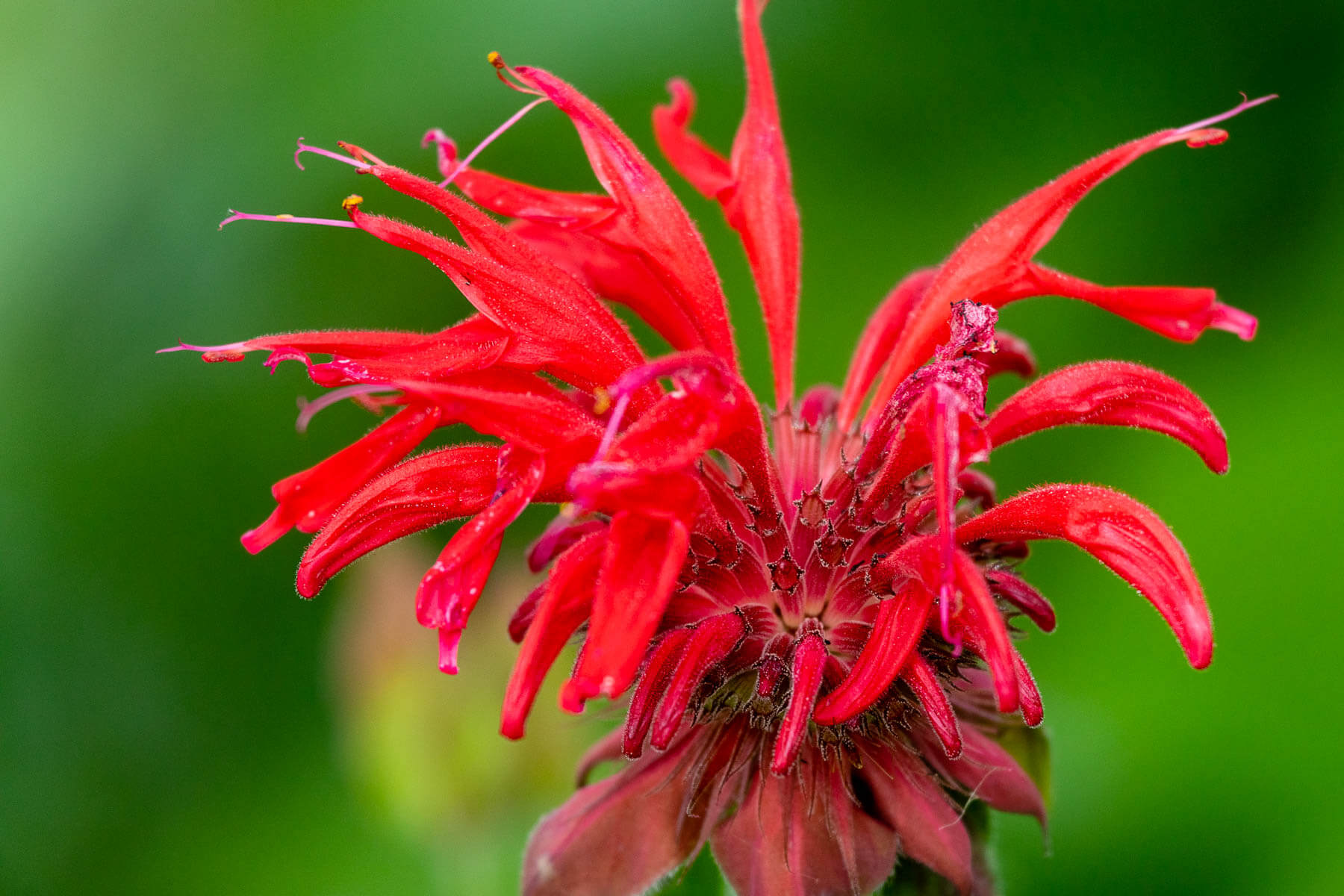
Scarlet beebalm (Monarda didyma) is a popular perennial with tufts of scarlet-red flowers. The three-foot stems are lined with large, oval, dark green leaves that have a minty aroma. Scarlet beebalm will attract hummingbirds to your garden.
4. Red Maple
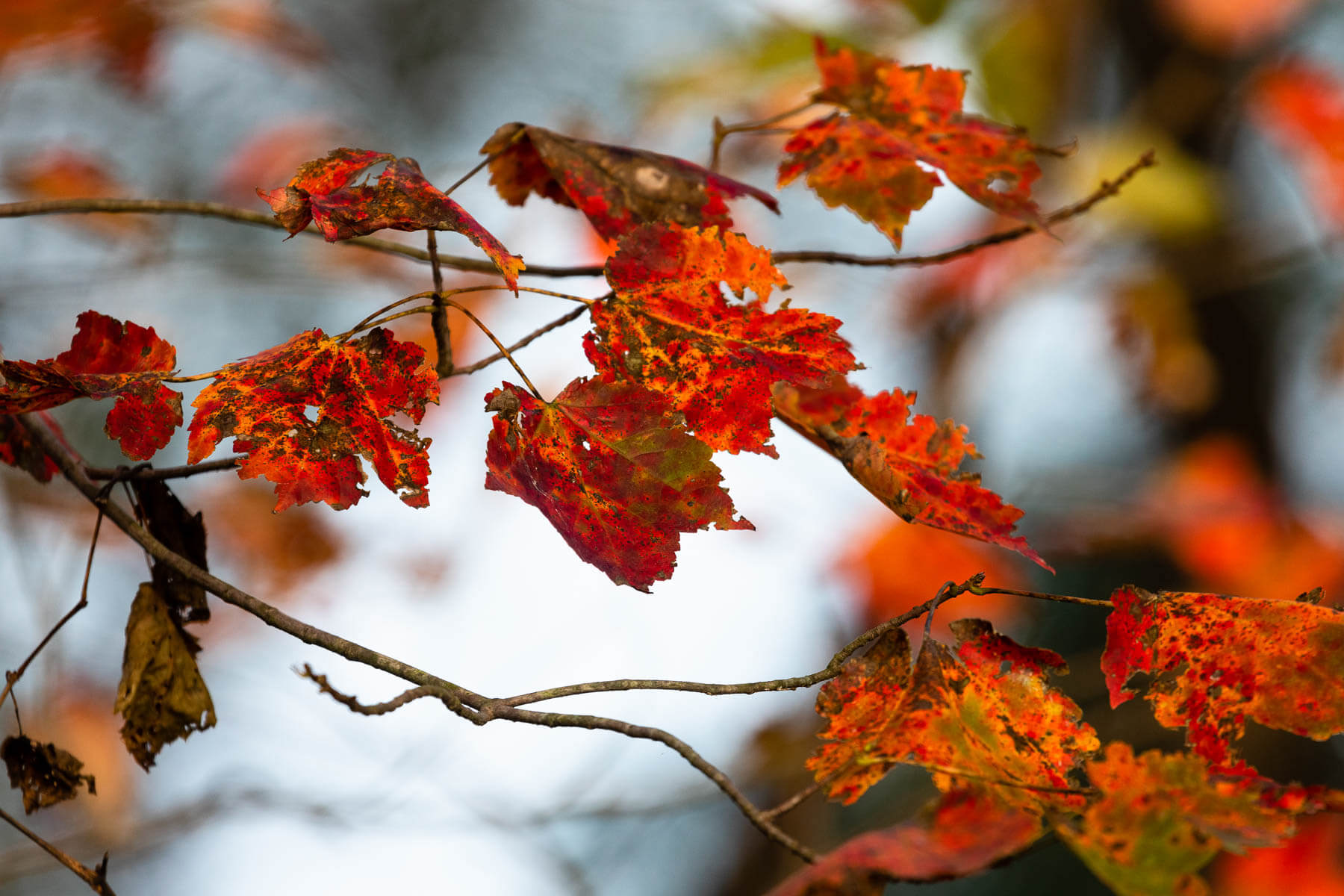
This popular, beautiful shade tree tree grows 40 to 60 feet in cultivation, occasionally reaching 100 to 120 feet in the wild. Red maple (Acer rubrum) is named for its brilliant red autumn leaves. It has the greatest north-south distribution of any East Coast tree species.
5. Flowering Dogwood
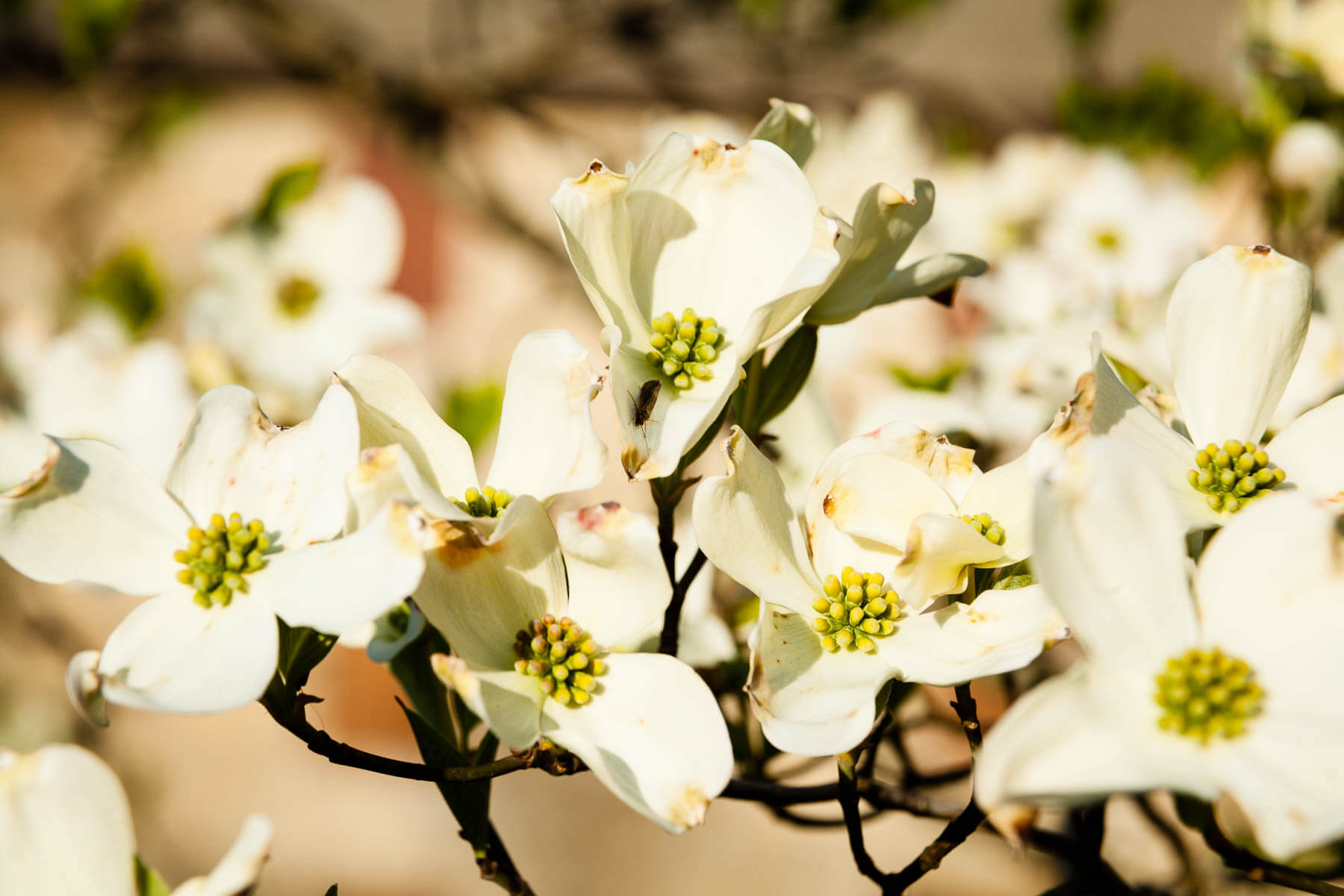
Considered one of the most spectacular native, flowering trees, flowering dogwood (Cornus florida) is a 20- to 40-foot, single- or multi-trunked tree with white or pink spring blooms. Its fruit is known to attract birds and deer.
6. Eastern Redbud
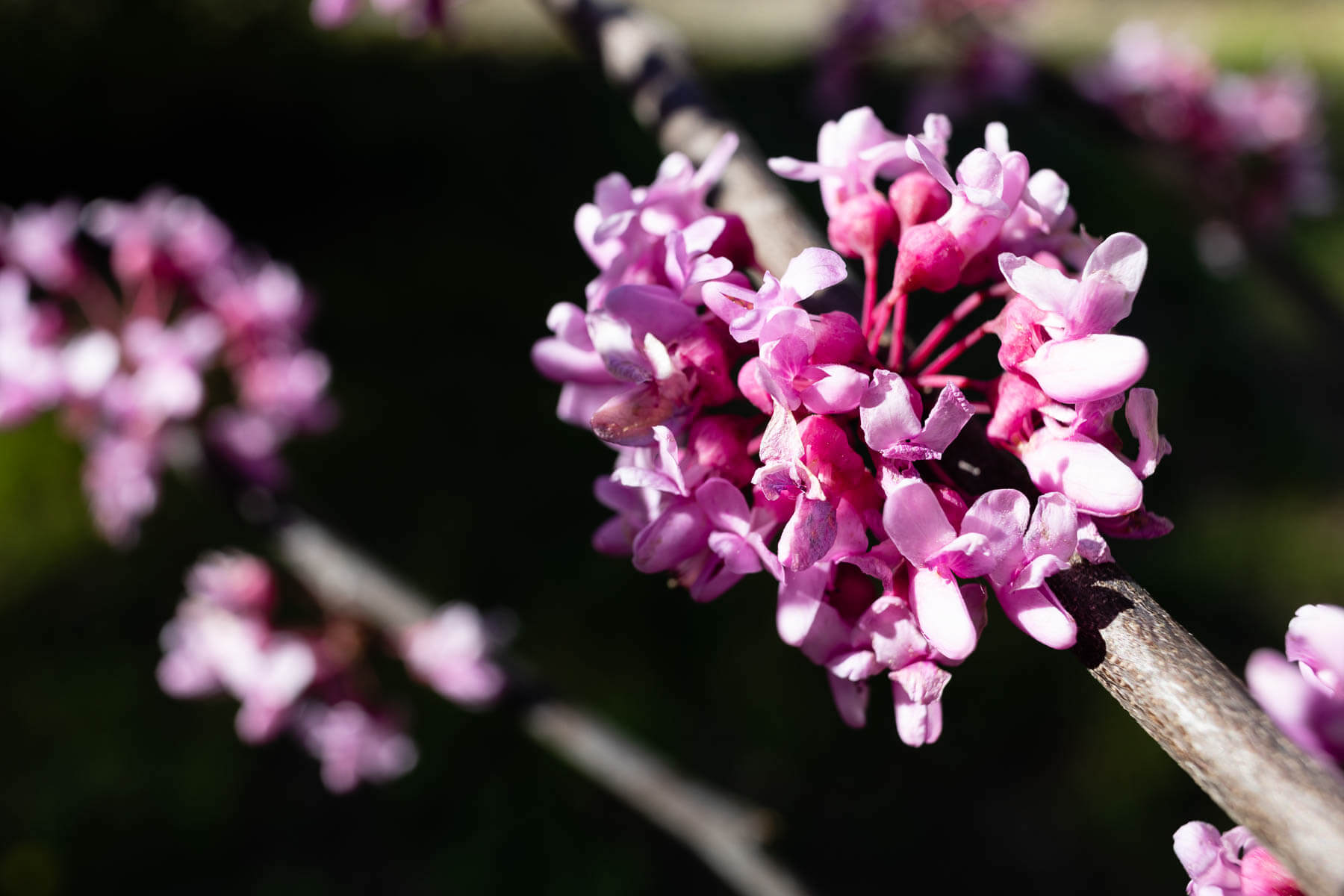
The eastern redbud (Cercis canadensis) is a 15- to 30-foot tree with a purplish or maroon trunk and a wide, umbrella-like crown. Its tight, pink flower clusters bloom before its leaves grow, offering a showy spring display.
7. Dense Blazing Star
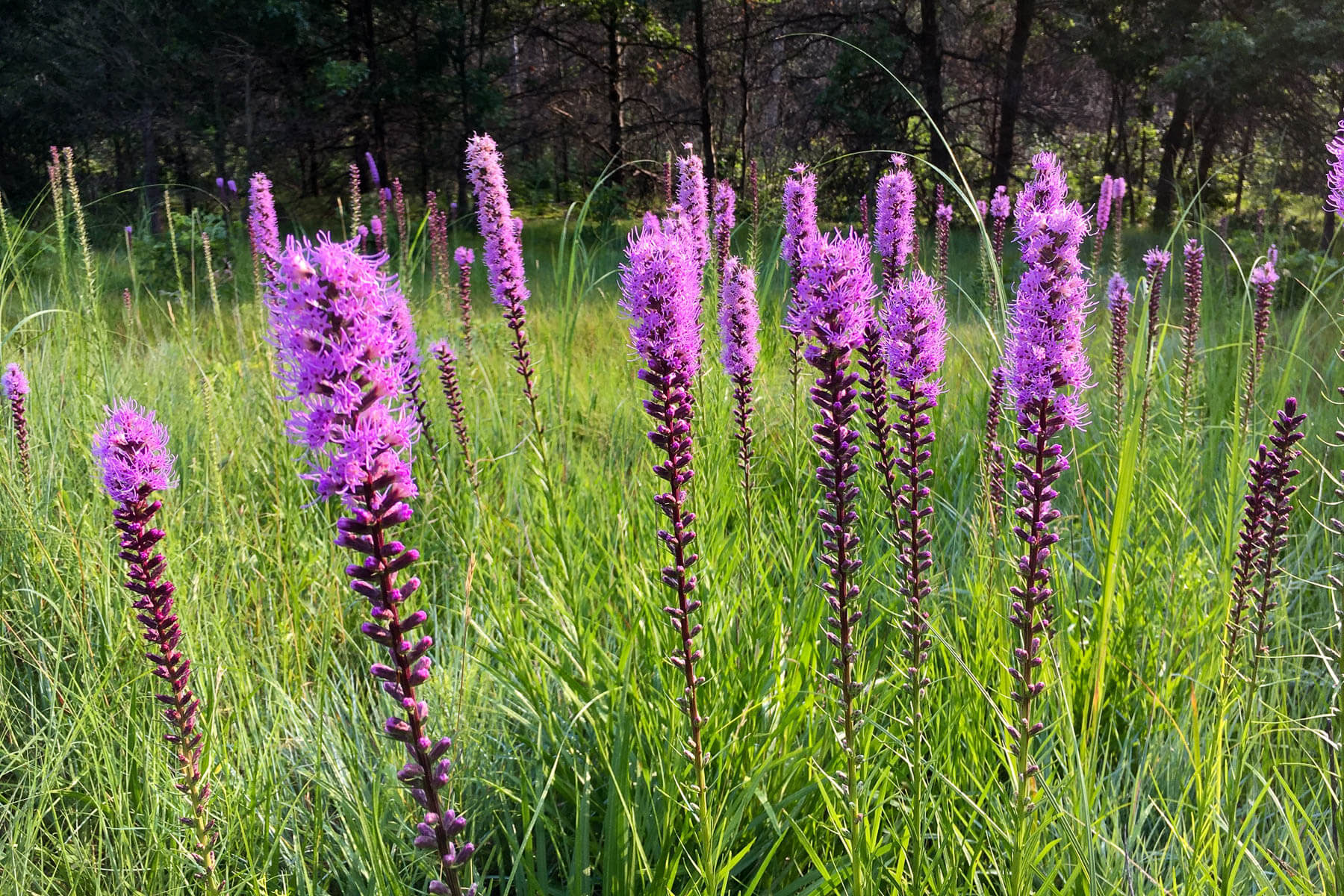
Blazing star (Liatris spicata) has long spikes of dense, feathery white or purple flowers that bloom from the top down. Birds, bees and butterflies will be frequent visitors to your garden if you plant these beautiful native flowers.
8. Common Boneset
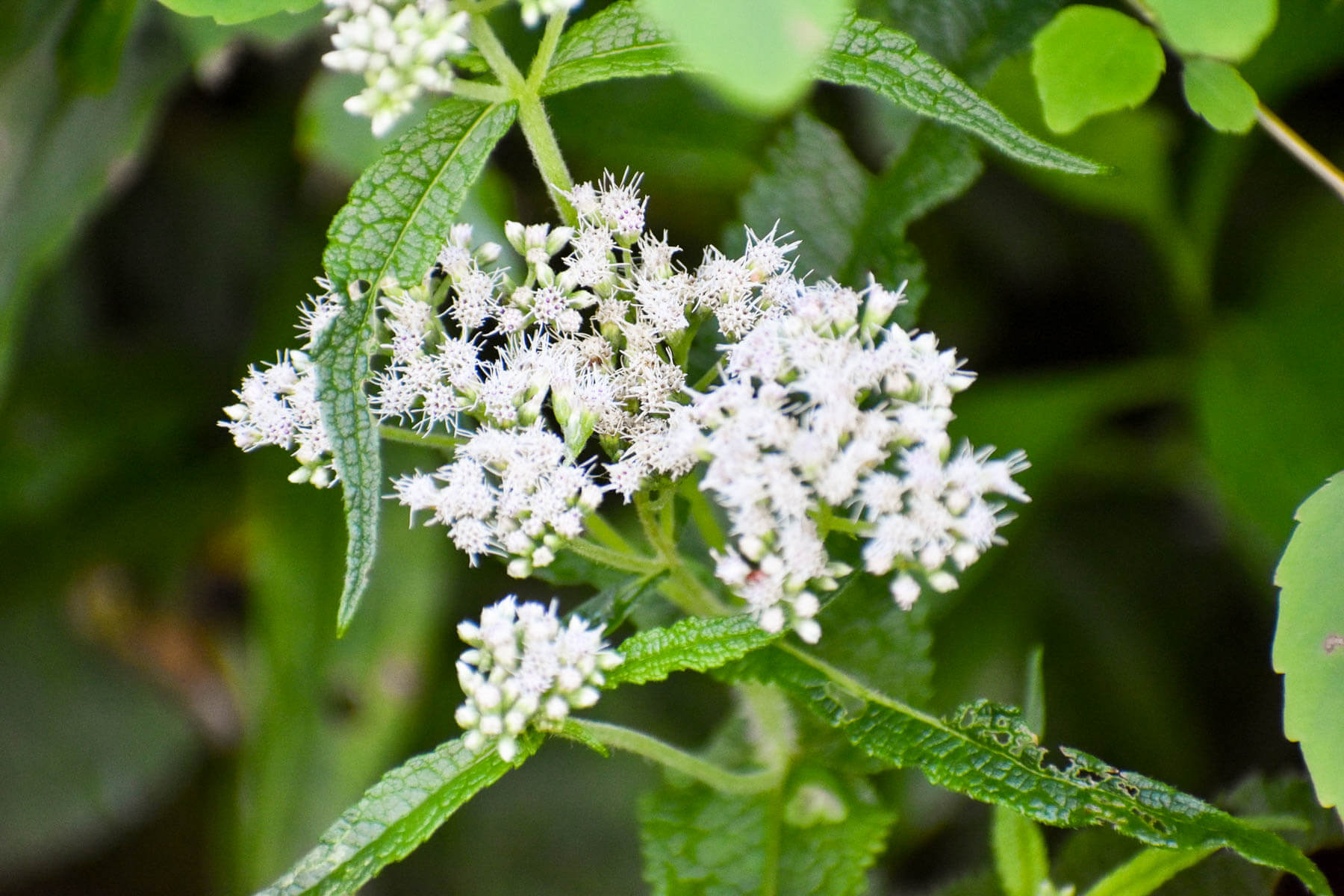
The tiny, white flowers of the boneset (Eupatorium perfoliatum) are arranged in fuzzy clusters atop three- to six-foot stems. Early herb doctors thought this plant helped set broken bones. Its leaves were wrapped with bandages around splints.
9. New York Ironweed
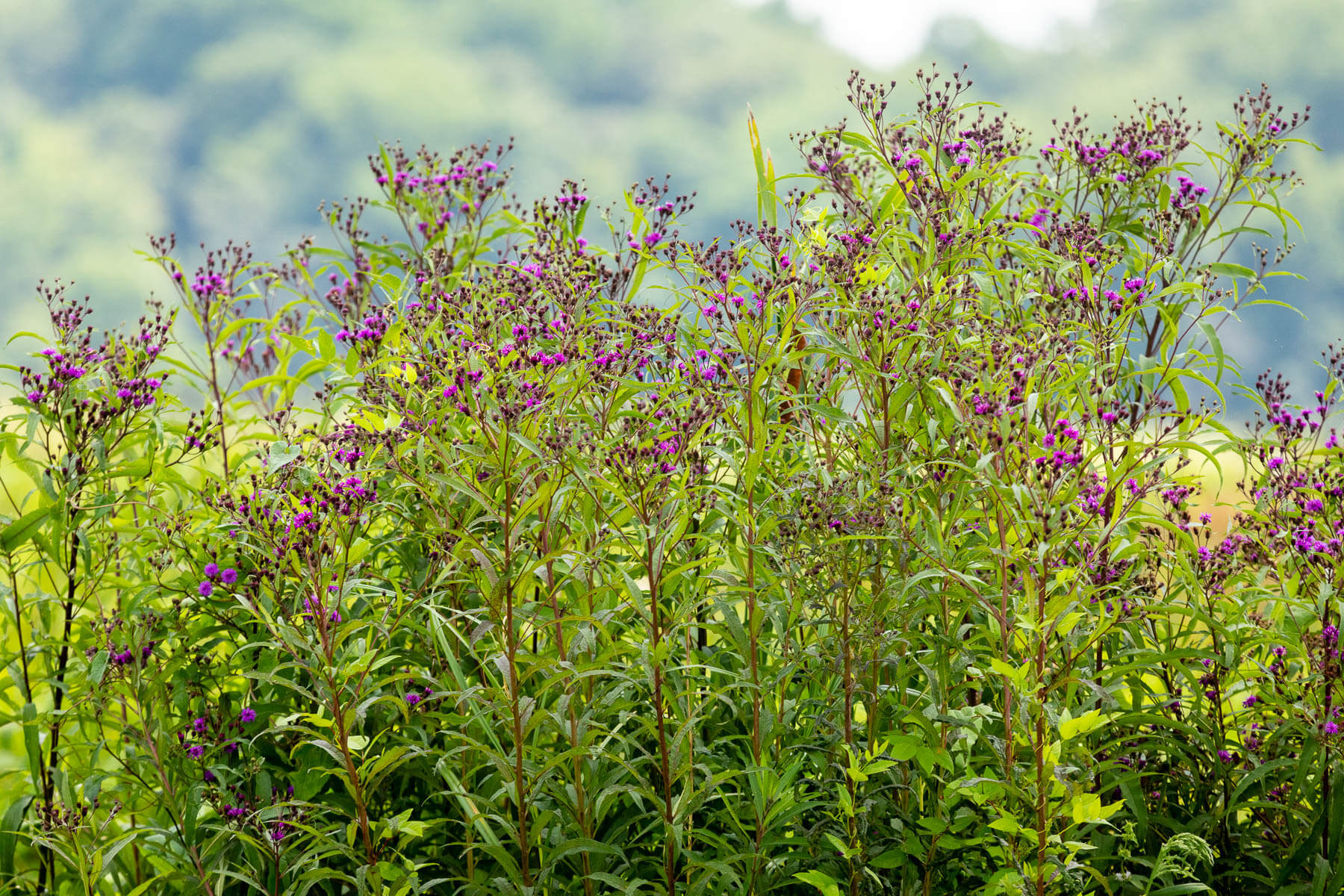
New York ironweed (Vernonia noveboracensis) is a tall perennial, growing five to eight feet in height. Its clumps of striking, deep reddish-purple flowers attract butterflies.
10. Cardinal Flower
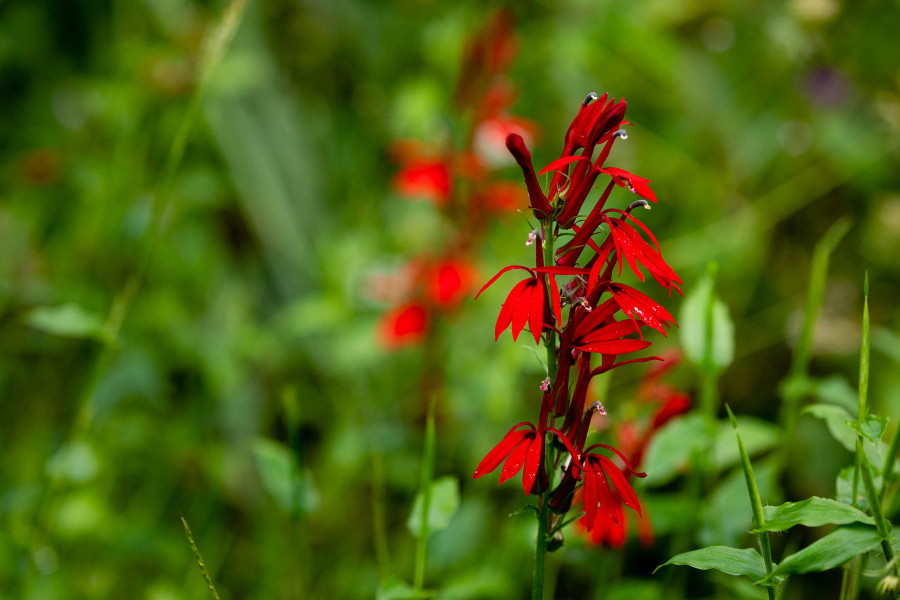
This perennial grows to be two to four feet tall and has showy, red flowers. Although relatively common, cardinal flower (Lobelia cardinalis) is scarce in some areas due to over-picking. Because most insects have difficulty navigating the plant’s long, tubular flowers, cardinal flower depends on hummingbirds for pollination.
For more information about native plants in our area, check out the Lady Bird Johnson Wildflower Center’s special Plants of Chesapeake Bay collection. This database contains hundreds of native plants and a link to a BayScaping guide that will help you use native plants in a Bay-friendly garden.

Comments
Echinacea purp is NOT native here. Please correct the record.
The folks complaining on here should remember that not everyone here is a master gardener and botanical names means nothing to them just like a nurse using medical terminology to explain a simple procedure. Sheesh. And the last pic is Lobelia cardinalis aka Cardinal flower and yes coneflowers are native to North Carolina there are a lot if species of each of these plants.
that last picture looks like some kind of salvia. Lobelia cardinalis flower and leaf are not what is pictured.
The first plant. purple coneflower isn’t native to this region. And I agree with the other comment, you must list botanical names otherwise people will purchase non natives, as non natives are easier to find in stores. Many non natives are either invasive or the culprit for bringing disease and decimating native populations. Another reason why botanical names are so important is because only the straight species are host plants to our native butterfly caterpillars. This is important because our gardening practices are starving butterflies and birds. The book Native Plants for Wildlife Habitat and Conservation Landscaping - Chesapeake Bay Watershed by the Fish and Wildlife Service is still the best resource for knowledge of true native plants with their respective botanical names. You can find it on Amazon. It’s unfortunate this article made it through without more scrutiny from an expert.
Lovely. Wish I had a native plant vendor near NNK, VA!
This is helpful.
People! The pictures are in there! Put on your glasses!
to see photos or botanical names, click on the plant name in blue; it's a link.
These plants are cool.
This is great information except you omitted scientific names. Too complicated for lay people, perhaps. Yet two flowering dogwoods are sold with that common name. One is native; Cornus florida. The other, Cornus kousa, originated in Asia. It was introduced here when a plant disease, (a fungal blight from Asia) appeared in this country. The two trees resemble each other enough that it is difficult to discern the difference.
Good list! I would like to see the botanical names included.
Very nice list, it would be great to have pictures of the plants and trees you recommend.
Great List! Photos would help...
Thank you!
Your comment has been received. Before it can be published, the comment will be reviewed by our team to ensure it adheres with our rules of engagement.
Back to recent stories